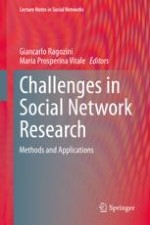2020 | OriginalPaper | Buchkapitel
A DEA-Based Network Formation Model. Micro and Macro Analysis
verfasst von : Claudio Pinto
Erschienen in: Challenges in Social Network Research
Aktivieren Sie unsere intelligente Suche, um passende Fachinhalte oder Patente zu finden.
Wählen Sie Textabschnitte aus um mit Künstlicher Intelligenz passenden Patente zu finden. powered by
Markieren Sie Textabschnitte, um KI-gestützt weitere passende Inhalte zu finden. powered by
